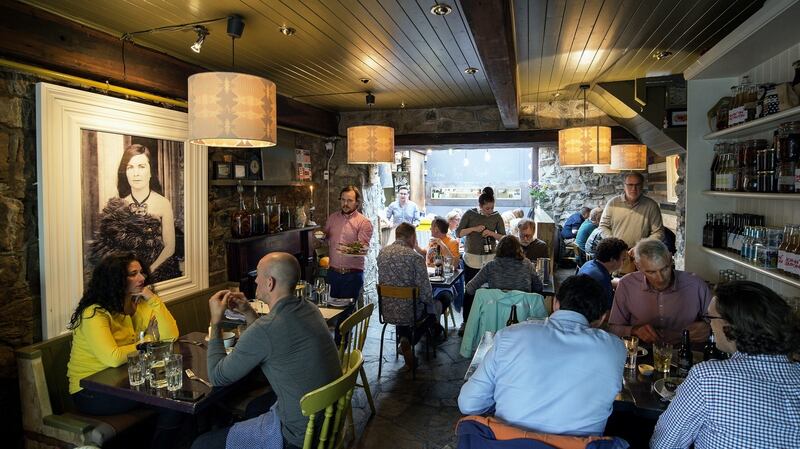I once sat beside a beef farmer at a wedding and got a different picture of the feast. We were all eating fillet, or beef tenderloin, and he was working out a head count of the number of cattle who’d died for the dinner. At a rough guess, based on 12 to 14 fillet steaks per animal, it came to a small herd.
Of course, the other cuts would have been used elsewhere but restaurant food often involves eating high on the hog. Behind many perfect plates of food is a trail of hidden waste, the gnarlier, uglier bits, the offcuts, the trimmings tossed in the bin. In many cases, the starrier the meal, the more the waste.
But chef Enda McEvoy wanted to open a low-impact restaurant when he opened his own restaurant, Loam, in Galway in 2014, which gained a Michelin star in 2016. Money was spent on aspects his diners never saw. The plumbing was designed to minimise water waste. Induction hobs only came on when the pan was on the range. Grow boxes were fitted with LED lights to grow a range of herbs. Mint and nasturtiums have been the best growers, along with woodruff, but their gardening experts still come in "and give out to us for not watering them properly".
When its bin company challenged Loam to try for zero waste, McEvoy decided to take the idea and do it for themselves. Farmers Fergal Anderson and Emanuela Russo, who supply their herbs and vegetables, were happy to take vegetable waste for compost. Then this summer, they started experimenting with cooking down the peelings in a low oven overnight. It makes a “thick umami rich glaze,” that McEvoy likes but is still wondering about. “The decision has to be whether it’s worth cooking them down, what’s the value of it. Is it just doing something for the sake of just doing it?” he says.
Minimising waste involves a constant set of questions about where to put your resources. More exciting than using the veg peelings has been a fermented mushroom juice made with mushroom stalks and a salt brine. After five days, he got an “almost almondy high umami beefy” condiment that he can use on a tartare dish.
Beef garum made with rice inoculated with koji mould and the trimmings from the beef in the restaurant makes “a really intense salty liquid. It’s amazing. We use it as a seasoning.” They also make a squid garum.

‘We’re not preaching’
Do they tell the customers where those deep flavours come from? “We’re not preaching or explaining too much. The ‘this has been made out of squid guts’ explanation depends on the customer. “I’d hate to have the customers feel like they’re being preached at. The ingredient has to enhance the dish as a whole. It has to be delicious.”
Not everything has been. Onions have not reacted well to fermentation experiments. One was so “horrible and gassy” they had to air out the restaurant to get the stench out “as quickly as possible” after they’d opened the jar.
Last month, Loam and Jess Murphy’s Kai, also in Galway, were finalists, together with the eventual winner, Irish catering company FoodSpace, in the ‘celebrate local and seasonal’ category of the Food Made Good Awards, run by the Sustainable Restaurant Association in the UK.
Murphy, who has just become The Irish Times's food columnist, has built a range of criteria into her interactions with suppliers to try to ensure they are doing things with minimum or positive environmental impact. Cooking with minimum waste keeps you on your toes as a chef, she says. "This year we had amazing mackerel and loads of gooseberries in March. The seasons have been crazy but it's really good. I need to be creative anyway. Thank God I'm not a structured person."
She will often get a text from a farmer offering random produce, which means putting something on the menu out of the blue. “There’ll be a text saying ‘I’ve got 25 pumpkins and five kilos of chard. Will you take them?’” Luckily, she says washing vegetables is one of the favourite parts of her working day.
Murphy is adamant that sustainability also extends to paying staff a “liveable wage”. Getting to know her suppliers means she can tell their stories to her diners. “The joy is supporting farmers and growers who are not well off. That is a mutual support system.” Steve of Steve’s Leaves, who supplies her salad greens, supplied their first month of leaves for free when they opened, “which was a real Godsend”.
Cooking with the seasons and with material other kitchens discard takes planning and some nerve, Murphy says. “It’s like jumping in a puddle and not really knowing how deep it’s going to have to be.”





















